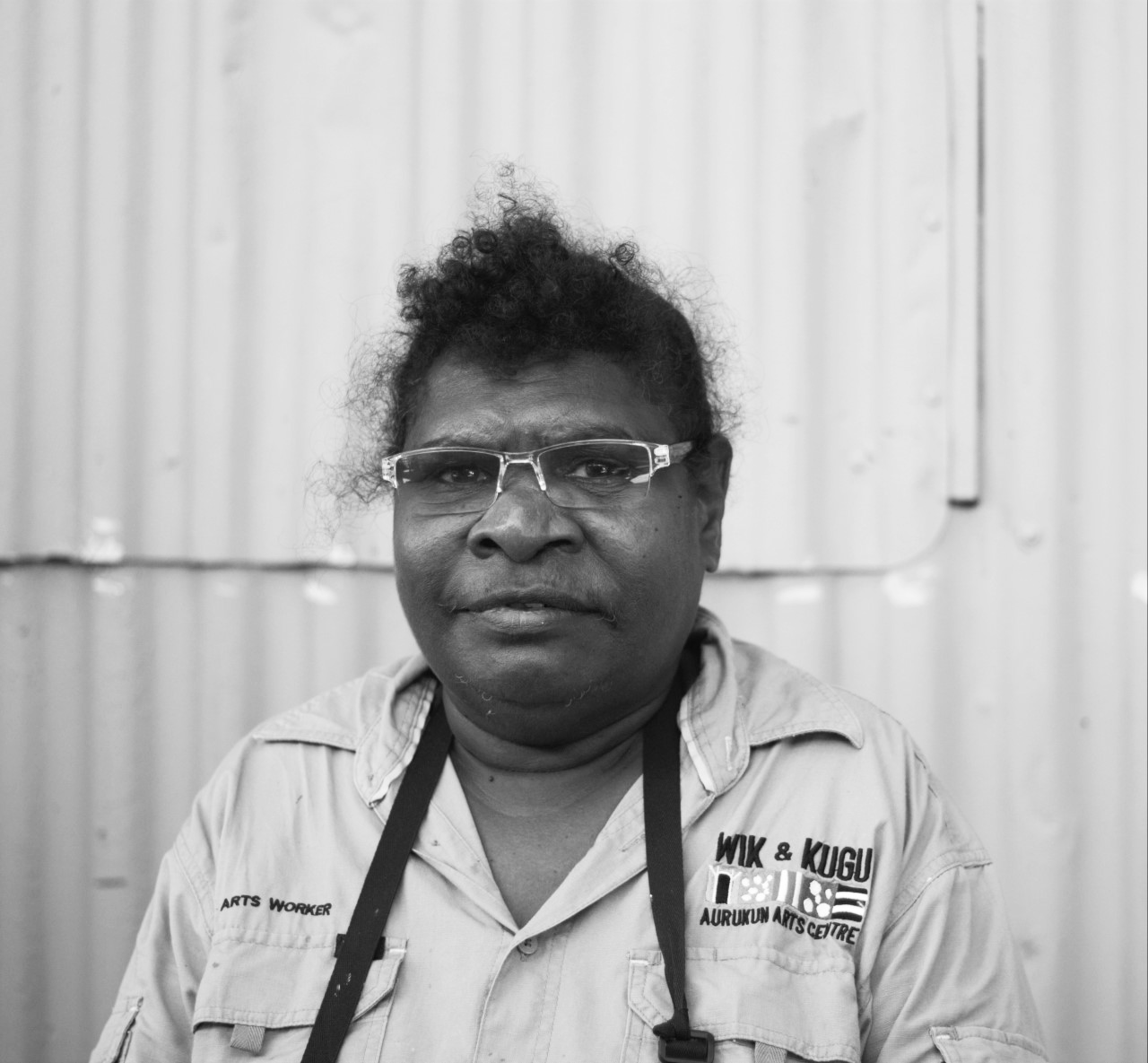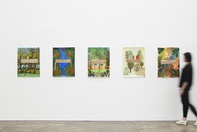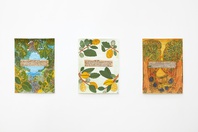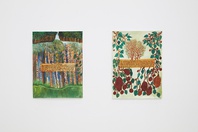Heather Koowootha
Gimuy/Cairns, Queensland
2023
Displayed 2023 at Carriageworks

Heather Koowootha
Wik-Mungkan/Kugu and Yidinji/Djabugay/Gunggandji peoples.
Born 1966, Yarrabah, Queensland.
Lives and works Gimuy/Cairns, Queensland.
Heather Koowootha belongs to the Wik-Mungkan people from her father’s side, Kugu people from her paternal grandmother and Yidinji/Djabugay/Gunggandji people from her mother’s side. Koowootha works with a range of media, including drawing, printmaking, painting, ceramics and weaving. Her works are inspired by stories and experiences of growing up and traditional ecological knowledges and teachings that have been passed down by her family. Koowootha was recently a resident artist and arts worker at the Wik & Kugu Arts Centre where she explored her cultural inheritances through ochre painting and carving techniques.
Image courtesy Wik & Kugu Arts Centre
Artist text
by Adam Ford
Words, powerful ones.
In being, knowing, and doing, Aboriginal and Torres Strait Islander peoples are inherently oral. Our orality is a creative means by which we inscribe ourselves into this world. So, how might orality then relate to our visual art? Prompted by the memory of us yarning up a storm, I began to think about the practice of Yidinji/Djabugay/Gunggandji and Wik-Mungkan/Kugu artist Heather Marie (Wunjarra) Koowootha. It followed that, when I looked closely, I heard clearly. While Koowootha’s practice appears primarily visual, I recognise a latent orality, of which I see two distinctions. The first is a cultural distinction. I take this as form. The second is a communicative distinction. I take this as function. Together, both speak to the undeniable primacy of orality in Koowootha’s practice.
From her Yidinji/Djabugay/Gunggandji mother and her Wik-Mungkan father and Kugu paternal grandmother, Koowootha has inherited an impressive suite of traditional knowledges, which underpin her practice and range from that of seasonal migratory birds to that of secret women’s business. In an Indigenous worldview mediated by the Dreaming, everything is at once. Our Ancestors never leave us. And so, their speaking is echoed always in ours. Thus, when Koowootha makes art, she activates an ongoing Ancestral continuum of Indigenous orality, and each time she makes, she speaks with and through her Ancestors. Relating the meaning of ‘Wik,’ her father’s tongue, Koowootha utters solemnly: ‘Words, powerful ones’. (1) The spoken word, for Koowootha, is a vessel of generative power. It creates. How art might then relate this spoken power thus becomes a question of mechanics. From form, Koowootha finds function.
In the Indigenous worldview, storytelling encompasses much more than merely retelling a story. It is a vehicle through which our knowledge is preserved and shared. I therefore see Koowootha’s storytelling as possessing a potent didactic charge. For she is storyteacher as much as she is storyteller. When she depicts, say, memories of Country, knowledge of customary law, or bush medicine, she proffers a lesson just as much as a visual experience. She is teaching – telling – what her Ancestors taught her. We bear witness to the lesson. In further harness of her art’s learned impulse, Koowootha moves across media, not unlike a narrator who journeys across their story by controlling pitch, pace, projection, and pause. Her pursuit is purposeful. When she paints portraits, she recognises something venerating in the genre. When she renders her ecological knowledge of flora in watercolour, she stands in recognition of its aesthetic echoes, such as those relating to the botanical illustrations of First Fleet coloniser-cum-botanist Joseph Banks. Recent works in ochre mine the same guarantees of media and chart sacred geographical sites and associations through which she traces matrilineal descent. From function, Koowootha finds form.
The inheritance of an expanse of traditional knowledges and oral traditions enlivens – literally – Koowootha’s practice with the being of every Ancestor before her. Through them, she speaks, and through her, they speak back. Her making is one of speaking; her speaking one of making. For such is the generative force of words – powerful ones.
(1) Heather Marie (Wunjarra) Koowootha, artist interview for Embodied Knowledge: 13 August 2022 – 22 January 2023, Queensland Art Gallery | Gallery of Modern Art
Artist's acknowledgements
Heather Koowootha thanks her old people, family, community, NorthSite Contemporary Arts, Cairns, and everyone who has shared knowledge and stories with her.


